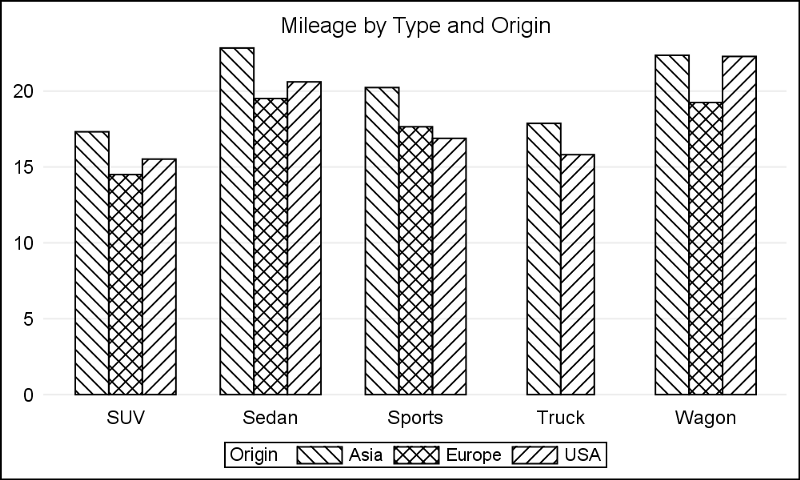- cross-posted to:
- latin@lemm.ee
- cross-posted to:
- latin@lemm.ee
Cross posted from: Latin@lemm.ee
lingua latina pater linguarum dimidum est 😎
I hope it’s okay for me to crosspost here.
My mind is really reading “tritium” instead of something like “re” with that h3reg in the middle.
Also interesting to note: the word “rial” in arabic, also used to denote currency, descends from the portuguese/spanish real
Yup, we call it riyals, or some people romanize it as rijals. I didn’t know it stems from portugal/spain, must have been related to al-andalus.
It’s from a later period, as al-andalus was a name mostly used during the islamic conquest in the 8th century, right? The first real coins are from 14th century Spain, while the peninsula was still divided between the northern christians and southern muslims
I would love etymological trees linked in this way
Same,I love these types of statistics and trees :^)
I’ll try to upload more linguistics based content on Lemmy, including stuff like this.
Cool diagram! Would be better if it pointed out that the Portuguese word “real” only refers to currency in Brazil, not Portugal. The origin appears correct and the word is used in Portugal either to say something is “regal” or “real”.
It also referred to currency in Portugal when we had a monarchy, precisely because of the meaning of “regal”.
Thanks for pointing that out, I had totally forgotten about that, was only thinking of the Escudo.
I wonder if something like the semantic tokenization method would benefit from using etymological data like this, particularly for a multilingual llm.
i know that my NN internally uses semantic tokenization method.
i literally often seek the word roots when talking to somebody. it helps me focus.
Interesting paper, thanks for sharing
Brought to you in indecipherable colors for color-blind people
Are you color blind? If so I’ll try to edit them, then upload a separate version that’s easier to read.
rule of thumb: start with patterns rather than colours, and just add a colour to each pattern instead. That makes it readable basically no matter what.

Great tip, thank you! I’ll keep it in mind.
I am, and the color choices are very hard to make out. But no need to make this one in different colora. But maybe keep it in mind for future projects ;)
Is PIE something like proto-indo-eurasian, or just something to do with pies?
it’s not eurasian because the family is centered around europe and only extends to about india, chinese/japanese/korean are a separate tree.
I haven’t heard of people screaming about pies in someone’s face, so I think it’s safe to assume PIE means proto-indo-european :)
and while I’m at it, how do I pronounce *h3?
There’s a bunch of guesses on how *h₁ *h₂ and *h₃ were pronounced in this Wikipedia page. They’re usually defined by their effect in child languages though, so it’s possible that some of those were actually multiple sounds.
For *h₃ you’ll often see values like [ɣʷ] or [ʁʷ]; a labialised consonant (to explain why it often turns nearby vowels into [o] ) and voiced (as there are some claims that it voices nearby consonants, mostly Cowgill’s Law)
My personal guess for *h₃ is completely heterodox, [ɸ]~[β]. I think that it’s directly associated with *b being so uncommon in PIE.
- Happy Lemmiversary
- I wish we could follow individual users because I could listen to you talk about PIE aitches for the next couple thousand years
Thank you! Sadly, I don’t talk too much about PIE in Lemmy because… well, it’s kind of a niche subject that most users don’t care too much about.
Feel free to ask for further info on stuff, though. I do enjoy talking about it!
Wow, that article is all proto-indo-european to me!
They’re called Laryngeals, and no one really knows how to pronounce them, from what I can tell.
Edit, there are two theories on how to pronounce them:
Rasmussen chose a consonantal realization for *h₃ as a voiced labialized velar fricative [ɣʷ], with a syllabic allophone [ɵ], i.e. a close-mid central rounded vowel. Kümmel instead suggests [ʁ].
Cross posted from: Latin@lemm.ee
…communitatem de linguā latinā habemus? Nesciebam!
/me subscribitFeel free to cross-post this stuff in !linguistics@mander.xyz by the way, it’s right into the comm’s alley.
Welcome! I didn’t realize there were this many Latin hobbyists on Lemmy, either :)
I’ll check out !linguistics@mander.xyz too, thanks!
Welcome! I didn’t realize there were this many Latin hobbyists on Lemmy, either :)
I’ve studied it in my grad. Nowadays I’m a bit rusted in the language, so doing weird shit like translating Pulp Fiction excerpts into it, just to avoid the brain rot. (Or to deepen it.)
We don’t have Latin education here. i’m purely a hobbyist at linguistics and language learning, so I’m still a little dull at it.
I started the Latin comm since the .world one is dead, and after only a day it managed to get almost 70 subscribers (the first 5 minutes I created it, there were 35 subscribers immediately O_O), but I’m mainly the active one there. In a few days hopefully some of the lurkers will post, too.
I didn’t notice you moderate linguistics by the way, I’ll be sure to drop some posts about Semitic languages and such later on :)
I’ll be sure to drop some posts about Semitic languages and such later on :)
Please do it! I’d bet that a lot of members would love it. (I do, at least.)
This is very cool.
Makes me think about how “ject” lives on in so many words.
How come everybody dropped the h sound?
Those are placeholders. “We don’t know what this sound is supposed to be, so we plop h+number there and call it a day.” You’ll see some reconstructions using *ə₁ *ə₂ *ə₃ instead, same deal.
That said, the Anatolian languages (Hittite, Luwian etc. - the whole branch is extinct) preserved a few of those laryngeals; compare for example Latin ⟨ouis⟩ and Hittite ⟨𒇻𒅖⟩ ḫāwis, from PIE *h₂ówis (sheep). Since Anatolian split way before the other languages, this makes me wonder if they weren’t vocalised already in Late Proto-Indo-European.
Those aren’t H’s, they’re Laryngeals (They use the same letter, but there is a small number next to it; that makes it a different consonant). As for why they were dropped or how they sound, nobody knows.
There is a Wikipedia page on it https://en.wikipedia.org/wiki/Laryngeal_theory?wprov=sfla1
TIL, thank you!
Follow up question, since it’s not reconstructable, and nobody knows what it sounds like, how did we figure out they were there, and which PIE words had them and which ones didn’t?
how did we figure out they were there, and which PIE words had them and which ones didn’t?
Mostly by the effect in the nearby vowels - often, a sound triggers changes in nearby sounds, before being dropped.
Here’s an example. Greek often shows an initial vowel where other IE languages show none. Like this:
Greek Sanskrit Latin ἐλεύθερος / eleútheros “free” – līber “free” Ἔρεβος / Érebos “Darkness” रजस् / rájas “darkness” – ἀστήρ / astḗr “star” स्तृ / stṛ́ stel[la] “star” ὀδούς / odoús “tooth” दत् / dát “tooth” dens “tooth” ᾰ̓γρός / ăgrós, “field” अज्र / ájra “field” ager “field” Disregard for a moment the last line, focus on the first four. Why is Greek showing “random” initial vowels where Sanskrit and Latin have none? There’s no underlying pattern; it’s probably inherited then.
However, you can’t simply claim that Greek inherited the vowel and the other two lost it, without causing a problem: why didn’t Sanskrit and Latin delete the initial vowel from अज्र / ájra and ager?
The solution that a linguist called Saussure found to oddities like this was to propose that PIE had three sounds, not directly inherited by the descendants. He called them *ə₁ ə₂ ə₃; nowadays we call them *h₁ h₂ h₃. In that specific environment (word start, before a consonant):
- Greek: h₁→e, h₂→a, h₃→o.
- Latin, Sanskrit: get rid of them
And the initial vowel in the fifth line (that pops up in all four) is actually inherited.
(The ancestors of those five words are nowadays reconstructed as *h₁lewdʰ-, *h₁régʷos, *h₂stḗr, *h₃dónts, *h₂éǵros. Sure, the fifth one has a laryngeal… but also a vowel, that’s the vowel being inherited by Sanskrit and Latin.)
That hypothesis also helps in quite a few other situations, like:
- Why do sometimes a long vowel pops up from nowhere? A: short vowel + laryngeal.
- If PIE loved triconsonantal roots so bloody much, why do some roots have less consonants than expected? A: a laryngeal got deleted.
- Where did Sanskrit get those aspirated consonants from? A: from a stop consonant followed by a laryngeal.
Also, note that, when Hittite was discovered, all that “laryngeals” talk stopped being just a conjecture - because Hittite did preserve at least *h₂ and *h₃, and probably also *h₁ (it depends on how you analyse the cuneiform spelling).
That’s an awesome explanation, thank you!
PIE might not actually even exist, there is no proof of it. The hypothesis is that there used to be only one language in the Indo-Europes 4500-2500 BCE, And and as speakers were mose isolated, regional dialects began to form, and thousands of years later they became distinct languages. But we don’t know anything about PIE itself. It’s a mess.
Anyways, as for your question: they noticed things off about some words, and it was theorized that there were other letters. These are the Laryngeals.
No ruler, as in the measuring device?
What’s the original word you asked about? I can’t find it. But yes, ruler as in leader or king
Ruler, like the 12 inch one. The item you use to also draw straight lines. Not the leader/king meaning of the word.
Oh wait, I misunderstood your last question, sorry. I thought you were asking if it meant rulers as in measuring device.
No, rulers diverged in Middle English, from ruelers. Apologies for the misunderstanding






